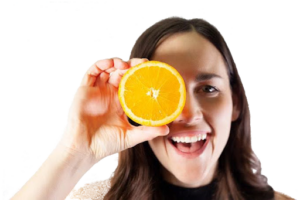If you’re following a FODMAP diet or suffer from IBS, you might be limiting your intake of sweet treats. Licorice (or liquorice in British English) candy is made from the licorice root, which has potential health benefits and is considered a potent natural remedy. Licorice FODMAP is known to be low, but certain kinds of it can trigger irritable bowel syndrome (IBS) symptoms.
This article will discuss different kinds of licorice FODMAP content, as well as how to safely incorporate them into your diet.

Understanding FODMAPs
FODMAPs are a kind of carbohydrate that can be difficult to digest. It’s an acronym that stands for fermentable oligosaccharides, disaccharides, monosaccharides, and polyols. When your body processes food, it absorbs nutrients into your bloodstream. However, FODMAPs take a different route and reach the end of your intestine. Since most of your gut bacteria is there, the presence of FODMAPs can affect the equilibrium of your digestive system.
Your gut bacteria process the FODMAPs, which then produce hydrogen gas when broken down. This is what causes the digestive issues for people suffering from IBS, like bloating, stomach pain, and constipation. The FODMAPs can even cause diarrhea if they bring liquid into your intestine. Licorice, however, does not have high FODMAP content.
Individuals with FODMAP sensitivity need to know what kind of foods have these short-chain carbohydrates to avoid having IBS symptoms. When checking for FODMAP, licorice might be top of mind as it is a favorite of many for a low-calorie, post-meal snack. While it might be tempting to reach for it, there are a few things you must understand about eating licorice on a low FODMAP diet.
Health Benefits and Risks of Licorice
Licorice root is well known in herbal medicine as a great cure to treat a range of ailments. Digestive issues, eczema, PMS symptoms, and coughs can be managed through a licorice remedy. It’s important to note, however, that quantifiable evidence of the herbal remedy as a cure-all is still lacking. Its key substance, glycyrrhizin, is pinpointed as the main source of its health benefits, but too much of this substance can lead to health complications.
If you consume too much glycyrrhizin, it can create a buildup in the body that spikes an individuals cortisol, which is a stress hormone. It can also make the body’s fluid levels dwindle, and it has also been linked to serious health issues like high blood pressure, heart, and kidney diseases. As such, it is recommended to consume licorice root moderately and to visit your doctor if any negative symptoms arise.
FODMAP Content of Different Types of Licorice
Traditional licorice is made from mixing a binding agent, like gelatin or starch, licorice extract, and sugar. In some cases, other ingredients like beeswax, flavoring, and sweeteners are added to give the candy more shape, shine, and taste. So, is licorice low FODMAP? Yes, but only certain kinds of it. Any additional ingredients may irritate those with a FODMAP sensitivity, and commercially sold licorice candies usually have a lot of additives. Here are the types of licorice and their FODMAP content.
Black Licorice
Black licorice is the traditional form of licorice candy. The licorice root extract gives it a distinct flavor, which some liken to anise. It is naturally sweetened with glycyrrhizin instead of typical sweeteners that contain fructose and polyols. Because of this, plain black licorice is considered low FODMAP. According to the FODMAP A to Z app, individuals who suffer from IBS or sensitive stomachs can safely consume 25 grams of black licorice candy.
Red Licorice
Red licorice is not considered “real” licorice because it is flavored differently from traditional black licorice. It usually has a strawberry, cherry, or raspberry flavor, which can be from either natural or artificial flavorings. Most variants of red licorice are considered high FODMAP because they are either sweetened with high fructose corn syrup or molasses.
Salty Licorice
This variant is more common in Sweden and Finland. It typically comes in black or dark brown colors, and they’re often used as a topping. It is mixed with salmiak salt, which makes it taste bitter and salty. However, salty licorice pieces are sometimes sweetened with corn syrup, which falls under the high FODMAP category. Thus, overall licorice FODMAP for the salty kind is high.
Licorice Tea
Licorice roots are known for many health benefits, and they can be steeped in hot water to turn into tea. The Monash University FODMAP app says that one 250mL serving of licorice root tea is low FODMAP. However, some findings suggest that it also has absolutely no FODMAP content, which means it is suitable for a low FODMAP diet.
Licorice Alternatives for Low FODMAP Diets
Apart from the traditional black licorice and licorice root tea, licorice is unsuitable for low FODMAP diets. The flavoring is well-loved in other types of food, so alternatives are welcome for those who suffer from IBS. Anise seed or star anise are excellent for incorporating licorice flavoring into baked goods, and they also fit with savory cooking. They are also a good alternative to licorice root for steeping in hot water to turn into tea.
Fennel seed also has the same deep, dark flavor profile as licorice. In terms of FODMAP, licorice may be high, but fennel seed is the complete opposite. It is as versatile as the anise seed, with the addition of being an excellent topping to cold, savory foods.
For dessert alternatives to licorice, here are some suggestions and serving sizes that are low FODMAP:
- Bite-sized pieces of dark chocolate – 5 squares (30 grams)
- Marshmallows – 4 pieces (25 grams)
- Peanut butter cups – 1 piece
- Rice cakes – 2 servings
- Instant jelly – Half a packet (250 mL)
Scientific Studies on Licorice Root and FODMAP
Licorice root is an excellent herbal remedy for increasing the potency of other herbal remedies. It is also great for detoxifying the body and keeping one’s gut health in check. However, licorice FODMAP content has not been widely studied and more research is needed to properly analyze its impact on a low FODMAP diet.
A study by the National Library of Medicine highlights licorice as anti-inflammatory and antioxidant. The right dose of glycyrrhizin can help bring many health benefits. As such, the intake must be limited to 100 mg/day, which is equivalent to roughly 60-70 grams of licorice. A good rule of thumb is to follow recommended dosages on any supplement or food packet’s product label.
Incorporating Licorice Into a Low FODMAP Diet
To fully enjoy the benefits of licorice while still sticking to a low FODMAP diet, you can enjoy a cup of licorice tea at night. Make sure to limit it to once a day as too much may lead to health issues. You may also enjoy three to four pieces of traditional black licorice candy, but make sure it stays within the recommended 25 grams of black licorice a day.
FAQ about Licorice FODMAP
-
Is licorice ok for IBS?
- Yes, but only natural black licorice candy and licorice tea. 25 grams of black licorice candy is considered safe for consumption when dealing with a sensitive stomach. Other kinds may aggravate the stomach and trigger IBS symptoms.
-
Is red licorice low FODMAP?
- No. Red licorice typically has additional sweeteners and flavorings that are high FODMAP and can trigger stomach sensitivity. It is best to avoid red licorice when on a low FODMAP diet.
-
Is black licorice low FODMAP?
- Traditionally made black licorice is low FODMAP. This is because its sweetness comes from glycyrrhizin, which is a natural sweetener found in licorice root.
-
Is licorice low-fat?
- Yes. Licorice is a naturally fat-free food.
-
Are licorice allsorts low FODMAP?
- Licorice allsorts are an assortment of licorice candies. A mixed bag can include flavored licorice candies, traditional black licorice, and commercially produced variants. Therefore, they are not low licorice FODMAP.

Conclusions
To keep your digestion balanced, all foods must be eaten in moderation. For those with IBS, a low FODMAP diet can be especially helpful as it reduces common triggers. Traditional black licorice and licorice tea are generally safe to enjoy because licorice FODMAP is low. But flavored varieties should be avoided.
However, there is no single diet that works for everyone. For the best outcomes, consult a Registered Dietitian or Nutritionist who can walk you through low FODMAP meal planning to achieve the best results for your body.
Check out our blog to learn more about low FODMAP diets. A Registered Dietitian from Health Loft can assist you in developing a tailored food plan and guide you in navigating your low FODMAP diet journey. Schedule a consultation with Health Loft today to learn how to properly fuel your body!













